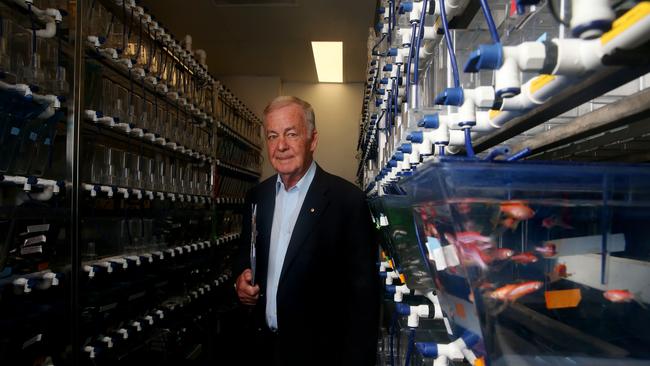Zebrafish find at heart of health game-changer
Scientists investigating the secret to curing heart failure have uncovered a vital clue ... a clue that lies within the South Asian zebrafish.

Scientists investigating the secret to curing heart failure have uncovered a vital clue ... a clue that lies within the South Asian zebrafish.
While it has been long understood that zebrafish possess a unique trait that allows them to regenerate heart cells after trauma, researchers have never been able to pin down why.
In a world-first discovery, the Sydney-based Victor Chang Institute has identified a protein, known as KLF1, that allows the zebrafish to repair its own heart.
Better yet, they know the same protein exists in humans.
“There is something wrong in humans that we are not able to turn the protein on when we need it,” Bob Graham, head of the institute’s Molecular Cardiology and Biophysics Division, said. “Some time during evolution, we lost our ability to do so. If we can understand that and find out why, we might be able to better utilise the protein to allow hearts to repair after an injury like a heart attack.”
The team at the institute discovered that when KLF1 was removed from the zebrafish, its heart lost its ability to repair itself after an injury, pinpointing it as a crucial self-healing tool.
The protein works by making remaining uninjured heart muscle cells more immature after an injury, and changing their metabolic wiring.
This allows them to divide and make new cells.
While engaging the protein won’t stop people from getting heart attacks, it could regenerate cells damaged from the trauma and prevent further failure.
“[The protein] is a master regulator of gene activity, it turns on all the genes required for regeneration.” Professor Graham said.
It has previously been proven that humans use KLF1 in early life to regenerate damaged cells, but by adulthood, the ability is gone.
Kazu Kikuchi, who led the research, said the findings “could be a game-changer” in treating heart failure moving forward.




To join the conversation, please log in. Don't have an account? Register
Join the conversation, you are commenting as Logout